‘Knee of Oppression’: The Gravity of this Civil Unrest

June 04, 2020 - 10:15 AM
The United States of America is currently in the midst of its largest civil unrest in half a century, with more than 100 major cities undergoing massive protests in the wake of the killing of George Floyd underneath the knee of a police officer in Minneapolis, Minnesota. Many of these cities across the nation, including Minneapolis, have been facing considerable looting and violent clashes with police over the weekend and into this week. For today’s college students, most have never lived through anything like these events, or the COVID-19 pandemic that preceded it and is still currently going on.
Professor of Political Science and Co-Vice President Elect of the Academic Senate, Kelly Rivera, and History Professor April Tellez offered insights into the enormous political and historical importance of this moment in the nation’s history.
“This is not a unique moment, however,” said Rivera. “Black Lives Matter brought to light an issue that has a long history in America.”
“The Black Lives Matter/ Stop Killing Us movement is most closely connected to the Civil Rights movement of the 1950s and 1960s,” said History professor Tellez. “That movement, however, was a movement concerning many different issues people of color faced in U.S. society. The Black Lives Matter (BLM) movement is fundamentally built on one basic principle: Stop killing black people.”
“When we see these protests, this is a call to action for all Americans to stand up for the things we believe in,” said Rivera. “If people don’t exercise their rights, they might as well not have them.”
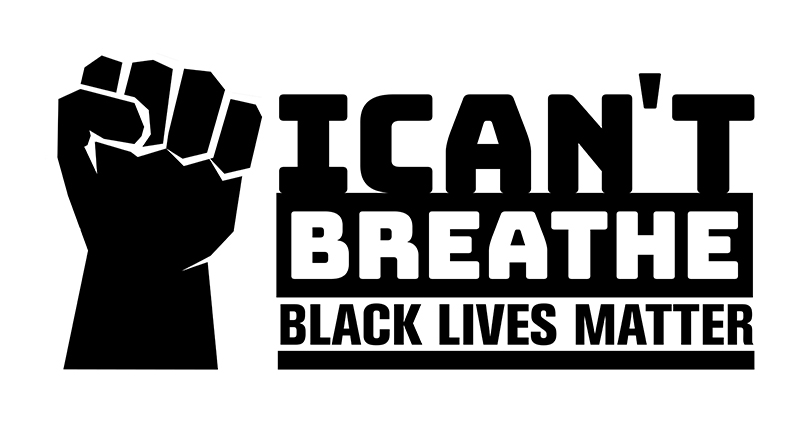 ‘The Spark’
‘The Spark’
“I think the ‘why George Floyd question’ is a good one,” said Rivera, “because his incident is not in a vacuum or an isolated event. It is part of a horrific list of violence against the black community. Although there have been many police killings of people of color, I think Floyd’s is the proverbial ‘spark’ because of the galvanizing moment we are in. We are in the midst of a pandemic, a lot of people are out of work with a lot of time on their hands, we are experiencing increasing levels of socio-economic divide in the country, and people are worried about their economic situation. We also are at peak levels of political polarization.”
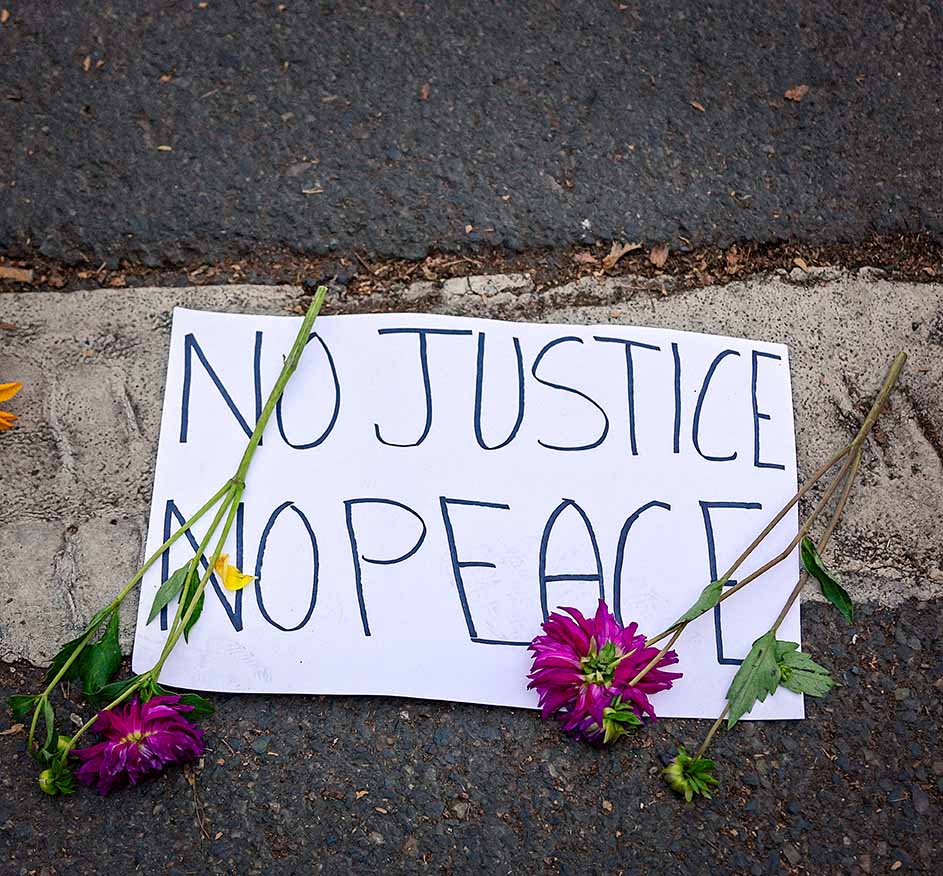 “If we look at the number of black women and men murdered in the U.S., it has been
on a steady incline in the last four years,” pointed out Tellez. “With the murder
of four blacks in the month of May alone, including Ahmaud Arbery, Breonna Taylor,
George Floyd, and Tony McDade, a black trans-man who was killed last Wednesday in
Florida, racism and neo-lynching is constantly in the face of Americans. The murders
are one, after another, after another. Witnessing George Floyd’s murder was just too
much for U.S. society.”
“If we look at the number of black women and men murdered in the U.S., it has been
on a steady incline in the last four years,” pointed out Tellez. “With the murder
of four blacks in the month of May alone, including Ahmaud Arbery, Breonna Taylor,
George Floyd, and Tony McDade, a black trans-man who was killed last Wednesday in
Florida, racism and neo-lynching is constantly in the face of Americans. The murders
are one, after another, after another. Witnessing George Floyd’s murder was just too
much for U.S. society.”
“The video (killing of Floyd) is an undeniable image,” said Rivera. “There is no explaining it away and you are faced with the reality of the situation.”
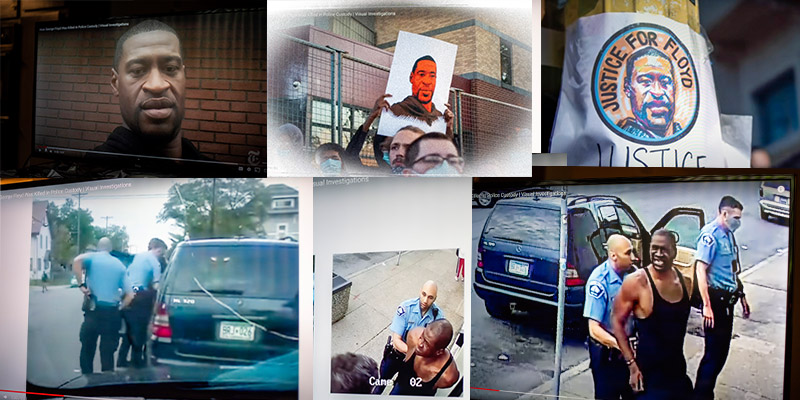 “Watching the footage of George Floyd’s murder, we see the officer put his knee into
George’s neck as George begged him to let go, cried out for his mother, and in a raspy
voice, told the officer he could not breathe,” described Tellez. “All the while, three
fellow police officers stood by watching. Not one of them tried to intervene even
though George was clearly not resisting. The footage proved this was not a police
officer’s lapse in judgment in an uncertain situation. Rather, the footage demonstrated
it was a methodical action for all officers involved. This was not footage that could
be debated, nor one where the officers could be given the benefit of the doubt. It
was clear as day—this black man had been murdered as three officers and a crowd of
bystanders watched and filmed.”
“Watching the footage of George Floyd’s murder, we see the officer put his knee into
George’s neck as George begged him to let go, cried out for his mother, and in a raspy
voice, told the officer he could not breathe,” described Tellez. “All the while, three
fellow police officers stood by watching. Not one of them tried to intervene even
though George was clearly not resisting. The footage proved this was not a police
officer’s lapse in judgment in an uncertain situation. Rather, the footage demonstrated
it was a methodical action for all officers involved. This was not footage that could
be debated, nor one where the officers could be given the benefit of the doubt. It
was clear as day—this black man had been murdered as three officers and a crowd of
bystanders watched and filmed.”
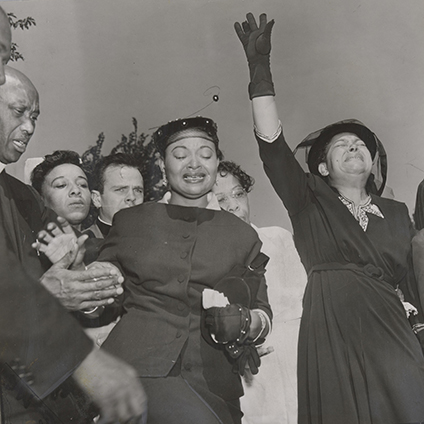 “It is very similar to Emmett Till,” explained Rivera. “who, as a 14-year old boy in 1955, was tortured and murdered
in the Mississippi Delta (after being falsely accused of flirting with a white woman,
which was not a crime if he had). Emmett’s mother held an open casket funeral for
her son and invited the press for the world to bear witness to the horrors of racism
and what it did to her child. People couldn’t deny the reality of what happened.”
“It is very similar to Emmett Till,” explained Rivera. “who, as a 14-year old boy in 1955, was tortured and murdered
in the Mississippi Delta (after being falsely accused of flirting with a white woman,
which was not a crime if he had). Emmett’s mother held an open casket funeral for
her son and invited the press for the world to bear witness to the horrors of racism
and what it did to her child. People couldn’t deny the reality of what happened.”
“The movement comes now, after more than 1,250 black people have been killed by the police since 2015. This uprising was deeply-rooted and long coming. Black people are two and a half times more likely to be killed by the police than whites are. Add in the instability and loss of jobs due to the COVID-19 pandemic, and that intensifies people’s anger and frustration, and their willingness to rally against it,” pointed out Tellez.
 “Blend together of all these conditions,” said Rivera. “It’s a recipe for protest.
The spark that lit the fire.”
“Blend together of all these conditions,” said Rivera. “It’s a recipe for protest.
The spark that lit the fire.”
Although Rivera notes that if the fervent protests aren’t maintained at this level for a long period of time, “We shouldn’t take that as a sign the movement has died out. Protests with this energy, and people gathered en masse in every state and around the globe every day can be hard to sustain because people do have to get back to their lives at some point. But that doesn’t mean the movement won’t continue to have energy and thought behind it. The energy and presence of the movement will most assuredly continue on in the political narrative, especially during election season. You can bet this will be part of every campaign rally and speech in the 2020 elections. But we will have to see what that narrative is.”
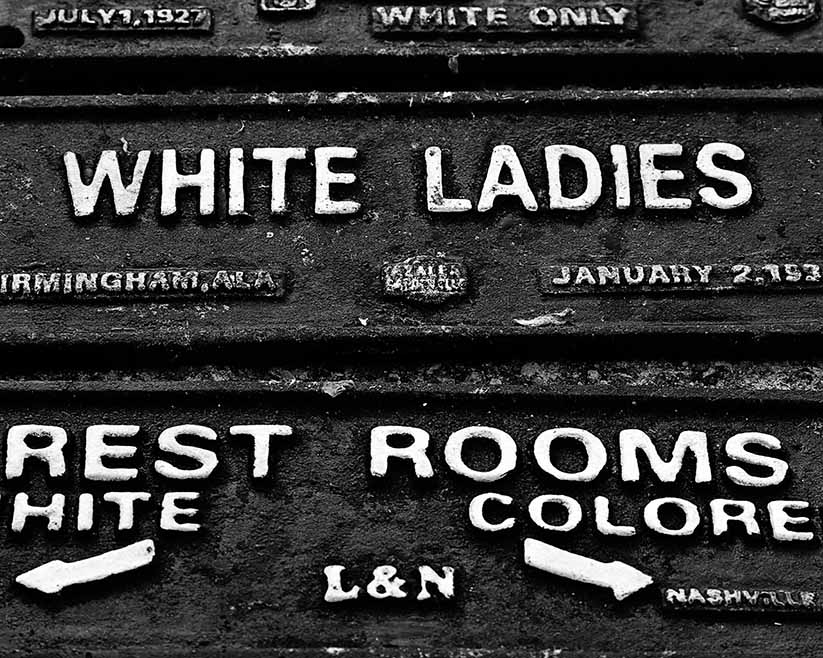 “The pandemic created, if you will, the perfect storm for civil unrest,” said Tellez.
“It is not the root cause, but it does contribute to the frustrations, economic vulnerability
and instability of the masses. A good example of causation and consequence is WWII
and the Civil Rights era. People of color who returned home as war veterans were no
longer willing to accept second class citizenship. They had just put their lives on
the line to defend American democracy and fight against fascism, and then they returned
home to segregation and discrimination. This gave birth to the Civil Rights era.”
“The pandemic created, if you will, the perfect storm for civil unrest,” said Tellez.
“It is not the root cause, but it does contribute to the frustrations, economic vulnerability
and instability of the masses. A good example of causation and consequence is WWII
and the Civil Rights era. People of color who returned home as war veterans were no
longer willing to accept second class citizenship. They had just put their lives on
the line to defend American democracy and fight against fascism, and then they returned
home to segregation and discrimination. This gave birth to the Civil Rights era.”
The Unrest Can Bring Alarm, as well as Hope
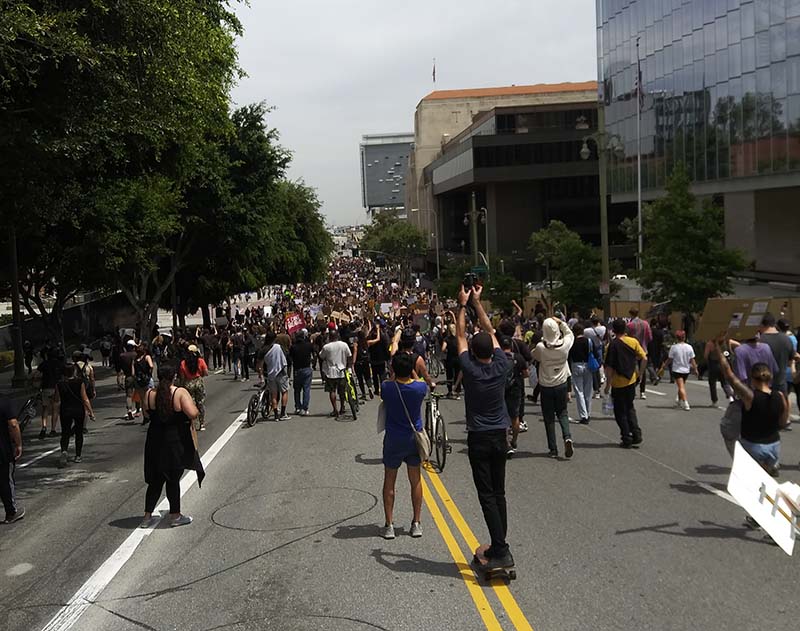 “Parts of the protests are tipping into violent rioting,” said Rivera, “and that is
not new as an American tradition. Look at any of our moments of great civil unrest
and you will find that, as well.”
“Parts of the protests are tipping into violent rioting,” said Rivera, “and that is
not new as an American tradition. Look at any of our moments of great civil unrest
and you will find that, as well.”
“Movements become more extreme when more conventional and peaceful forms of protest do not produce any results,” said Tellez. “A truth to history is that when people repeatedly try to use legal avenues for change—the courts, laws, peaceful assembly, etc., and no institutional change is substantially made, that is when people are more likely to loot and riot.”
“This is just the outpouring of a legacy of oppression we are seeing,” said Rivera.
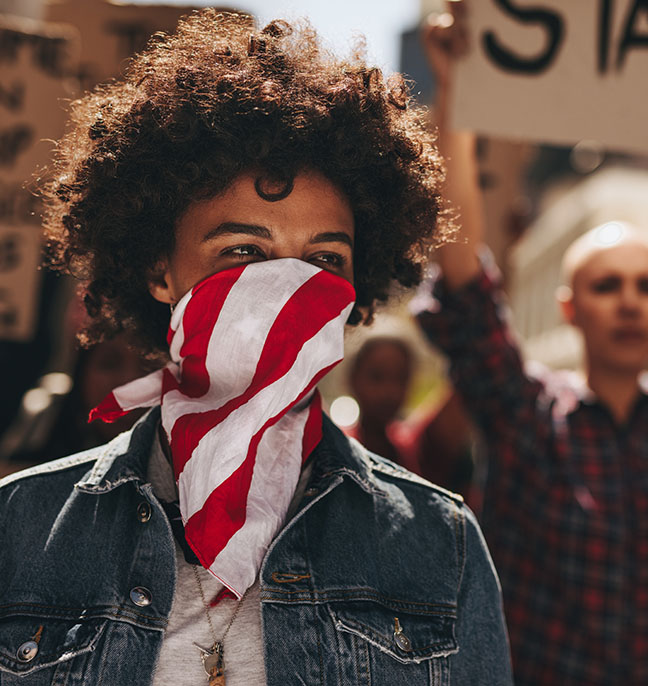 “I do think that protest, assembly, and free speech is definitely part of the American
fabric,” said Tellez. “It is what the U.S. fundamentally prides itself on, and rightfully
so. Having the ability to question the government, speak openly about beliefs, and
peacefully assemble are the cornerstones of a democracy, and we have seen numerous
times when the first amendment was employed to successfully bring about change. A
couple of great examples of this are the anti-Vietnam War protestors and the Chicano Blowouts of 1968.”
“I do think that protest, assembly, and free speech is definitely part of the American
fabric,” said Tellez. “It is what the U.S. fundamentally prides itself on, and rightfully
so. Having the ability to question the government, speak openly about beliefs, and
peacefully assemble are the cornerstones of a democracy, and we have seen numerous
times when the first amendment was employed to successfully bring about change. A
couple of great examples of this are the anti-Vietnam War protestors and the Chicano Blowouts of 1968.”
“I would argue that we are seeing, and will continue to see, mass movements and a large shift in America,” said Tellez. “I believe that the younger generations of Americans are spearheading a lot of the change, and that there is a new consciousness being born.”
“People who were not affected by this issue did not pay attention to it before, and went about their lives. They may be shaken out of that,” said Rivera.
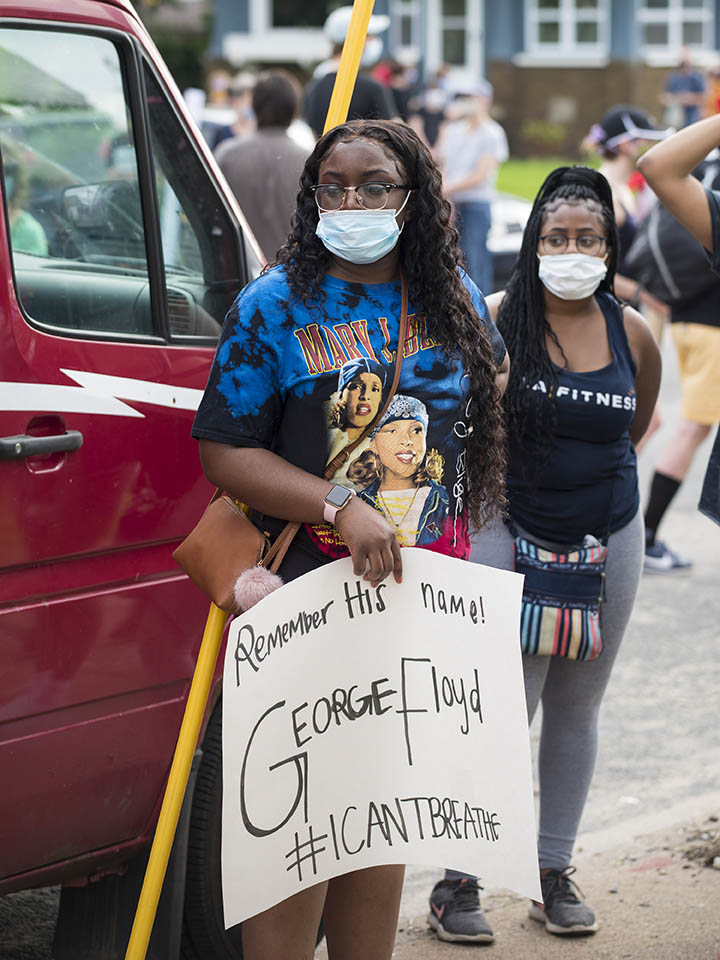 “Often times, it is easier for people to ignore or forget protests, especially if
that movement is out of sight,” said Tellez. “It is undeniable that more extreme acts
of civil unrest get more media attention, and they demand society’s attention because
the looting and rebelling now has more direct consequences on broader society.”
“Often times, it is easier for people to ignore or forget protests, especially if
that movement is out of sight,” said Tellez. “It is undeniable that more extreme acts
of civil unrest get more media attention, and they demand society’s attention because
the looting and rebelling now has more direct consequences on broader society.”
How will History Remember this Moment?
The current acts of civil unrest must be seen in light of the long history of violence the state and the policing system has perpetrated in black communities for more than a hundred years,” said Tellez. “This has resulted in its reenactment by civilians who have grown up witnessing such violence. The rebellion and looting does not occur in a vacuum.”
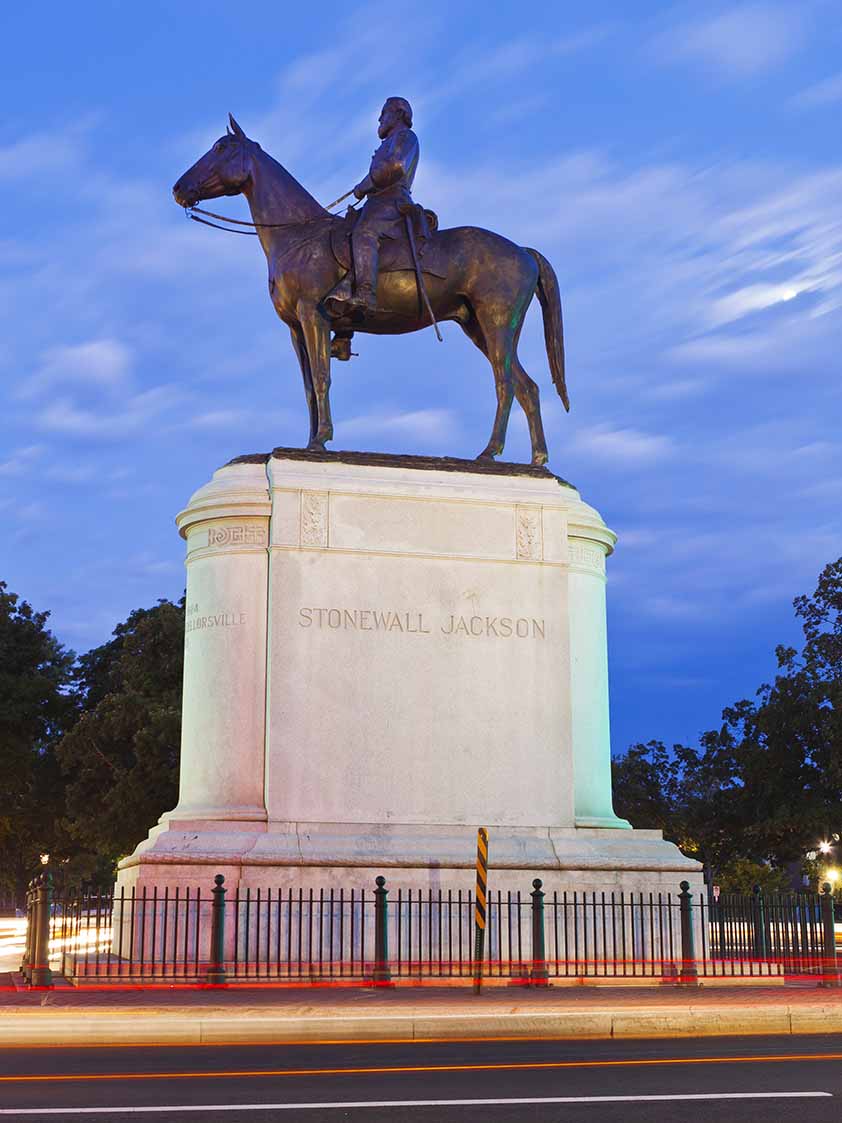 “The Civil Rights Movement achieved a number of commendable pieces of legislation,
as well as a number of historical victories in the courts,” said Tellez. “These are
important victories, and they did lead to some progress. But they did not change the
way that many people viewed people of color, and it did not make racists suddenly
non-racists. After the Civil Rights era, many Southerners clung to their idealization
of the Confederacy, and found new ways to discriminate against blacks. Across the
nation, people of color continued to be denied the right to live in white communities.”
“The Civil Rights Movement achieved a number of commendable pieces of legislation,
as well as a number of historical victories in the courts,” said Tellez. “These are
important victories, and they did lead to some progress. But they did not change the
way that many people viewed people of color, and it did not make racists suddenly
non-racists. After the Civil Rights era, many Southerners clung to their idealization
of the Confederacy, and found new ways to discriminate against blacks. Across the
nation, people of color continued to be denied the right to live in white communities.”
“The movement we are witnessing today is a collective movement,” explained Tellez. “I think the difference between now and the 60s is that more people are socially conscious and aware of the injustices facing blacks in America, and share in that pain.”
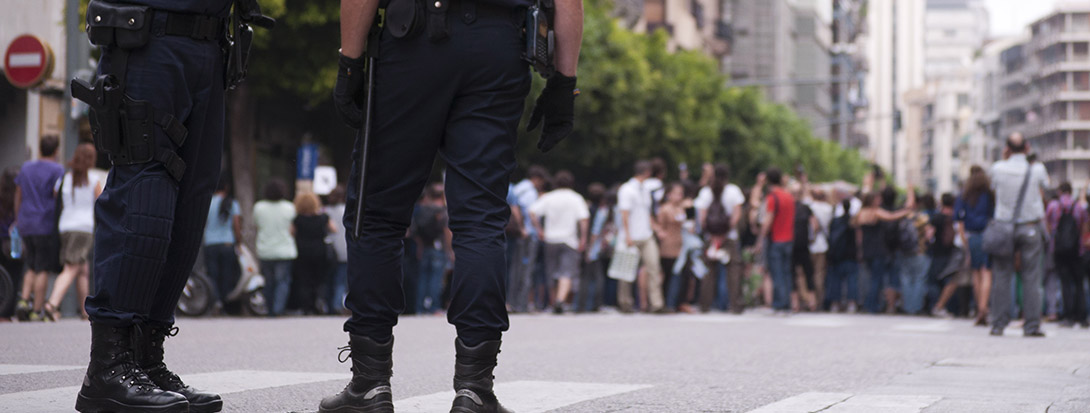 One striking similarity with the various protest movements of the 20th and 21st centuries and the BLM movement are their roots in racial inequality. “The labor movements
of the 20th century, the Occupy Movement, gun control, Anti-Vietnam protests all have a racial
component, as well,” said Tellez. “For example, labor in the 19th and 20th centuries
was racialized. As badly as the Irish or Eastern Europeans were paid and treated in
the factories, people of color were often paid far less and treated worse. The American
Federation of Labor initially prohibited people of color from joining its union. The
Vietnam War protests had one interest—get the U.S. out of Vietnam, but that too has
a racial component—people of color were overwhelmingly drafted and pushed to the frontlines
of war.”
One striking similarity with the various protest movements of the 20th and 21st centuries and the BLM movement are their roots in racial inequality. “The labor movements
of the 20th century, the Occupy Movement, gun control, Anti-Vietnam protests all have a racial
component, as well,” said Tellez. “For example, labor in the 19th and 20th centuries
was racialized. As badly as the Irish or Eastern Europeans were paid and treated in
the factories, people of color were often paid far less and treated worse. The American
Federation of Labor initially prohibited people of color from joining its union. The
Vietnam War protests had one interest—get the U.S. out of Vietnam, but that too has
a racial component—people of color were overwhelmingly drafted and pushed to the frontlines
of war.”
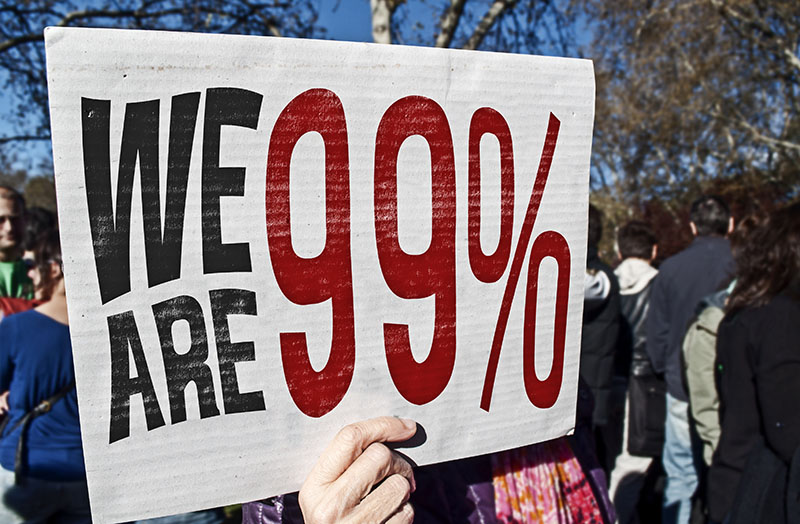 “The Occupy Movement was about the massive socio-economic inequalities in U.S. society.
However, race is also an undeniable and significant factor. Due predominately to historic
exclusion and discrimination, people of color, including blacks, tend to live overwhelmingly
in the lower socio-economic tiers of U.S. society,” explained Tellez.
“The Occupy Movement was about the massive socio-economic inequalities in U.S. society.
However, race is also an undeniable and significant factor. Due predominately to historic
exclusion and discrimination, people of color, including blacks, tend to live overwhelmingly
in the lower socio-economic tiers of U.S. society,” explained Tellez.
“What differentiates the Black Lives Matter movement is that it is built on one fundamental demand and premise: Stop people and the state from killing black people,” said Tellez.
“Protests that stay focused on one clarified message tend to have more success,” Rivera pointed out.
What May Change?
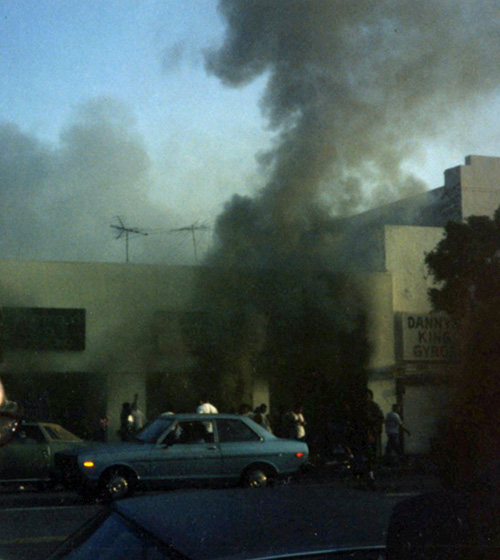 “For one thing, we don’t know what will happen to the officer arrested in George Floyd’s
killing or the other three,” said Rivera, pointing to the 1992 Los Angeles Uprising, which was not the result of the police officers’ beating of Rodney King; but rather,
from the acquittal of the officers in spite of the video evidence. “If there is a
perception that justice wasn’t served, it will just reignite this whole thing once
again and add more fuel to the fire.”
“For one thing, we don’t know what will happen to the officer arrested in George Floyd’s
killing or the other three,” said Rivera, pointing to the 1992 Los Angeles Uprising, which was not the result of the police officers’ beating of Rodney King; but rather,
from the acquittal of the officers in spite of the video evidence. “If there is a
perception that justice wasn’t served, it will just reignite this whole thing once
again and add more fuel to the fire.”
 “In order for change to happen, a majority of people have to stand behind it, requiring
a vast array of people from different backgrounds” said Rivera. “Martin Luther King
Jr. spoke powerfully about this in “Letter from Birmingham Jail,” where he wrote ‘we are caught in an inescapable network of mutuality, tied in a
single garment of destiny,’ arguing that everyone needs to stand for the rights for
which this country was founded.”
“In order for change to happen, a majority of people have to stand behind it, requiring
a vast array of people from different backgrounds” said Rivera. “Martin Luther King
Jr. spoke powerfully about this in “Letter from Birmingham Jail,” where he wrote ‘we are caught in an inescapable network of mutuality, tied in a
single garment of destiny,’ arguing that everyone needs to stand for the rights for
which this country was founded.”
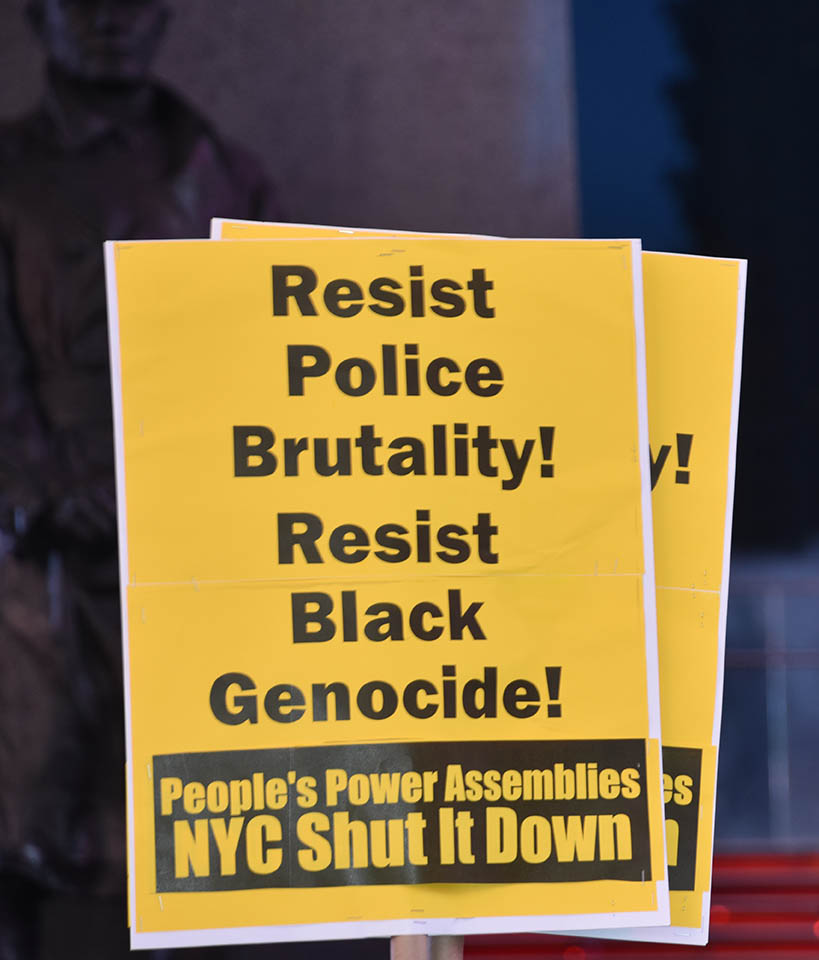 “The BLM movement will continue to exist until black people are no longer victims
of what I term neo-lynching,” said Tellez. “Sadly, racism is so deeply rooted in our
system, and in particular, in the police system of our country. After the Civil War,
Southerners, upset about the loss of the war, and eager to recreate another free labor
force, used any means necessary to convict blacks of any crime and put them into jail
to serve as free labor. Under the 13th amendment ‘slavery is prohibited in the United States except for those duly convicted
of a crime.’ This began the era of black criminalization in America.”
“The BLM movement will continue to exist until black people are no longer victims
of what I term neo-lynching,” said Tellez. “Sadly, racism is so deeply rooted in our
system, and in particular, in the police system of our country. After the Civil War,
Southerners, upset about the loss of the war, and eager to recreate another free labor
force, used any means necessary to convict blacks of any crime and put them into jail
to serve as free labor. Under the 13th amendment ‘slavery is prohibited in the United States except for those duly convicted
of a crime.’ This began the era of black criminalization in America.”
“People would need to be shaken out of their information bubble to see the other side of things,” Rivera said, noting that any significant change, “starts at a local level. There is a famous saying that ‘all politics is local.’”
“We might see local police departments stand up and condemn the things that led to these protests,” said Rivera. “But then, you have a growing segment of the population that doesn’t have faith in a fair and equal justice system - and they have evidence right before their eyes that shows them this. Rebuilding that is not something you can do overnight. It will probably take local, state and federal action to make these changes to restore the feeling they live in a system that is there to protect their rights and not to protect the system from them.”
 “I don’t expect change to happen next week. That’s not how our system works. It will
move slowly,” said Rivera. “The November elections will be an interesting bellwether,
particularly the elections in the Senate.” [Ed. Note – since the interview with Rivera,
Tuesday election results showed nine-term Iowa Representative Steve King lost the
Republican nomination for his seat. King is famous for incendiary comments about race
and immigrants, including wondering aloud about when the term “white supremacist”
became offensive].
“I don’t expect change to happen next week. That’s not how our system works. It will
move slowly,” said Rivera. “The November elections will be an interesting bellwether,
particularly the elections in the Senate.” [Ed. Note – since the interview with Rivera,
Tuesday election results showed nine-term Iowa Representative Steve King lost the
Republican nomination for his seat. King is famous for incendiary comments about race
and immigrants, including wondering aloud about when the term “white supremacist”
became offensive].
“In my history classes, I argue that we are living in the new Civil Rights era,” said Tellez. “But I would define it not just as a civil rights era, but a fundamentally human rights era. This is not just about civic and legal inequalities, although that is definitely part of it.”
However, signs of change are happening right in the middle of the protests, said Rivera. “It’s incredibly powerful to see sheriff’s deputies laying down their riot gear and marching with the protestors to say, ‘yeah, we agree with you.’ However, that was juxtaposed with the opposite reactions in some places with police abuse of the press and excessive use of force.”
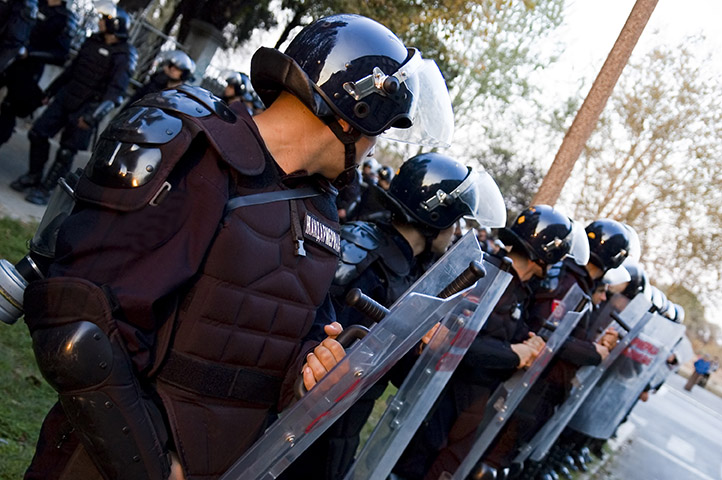 Rivera said outside of the BLM movement’s goals, the militarization of police forces
across the county is likely to become an issue. “We saw it take root in the 1960’s.
When you see these police show up to the protests, they look like members of the military.
It creates an oppositional moment and creates different reactions in people. It’s
possible that the protests become more violent with a more authoritarian response.
If they continue to meet these protestors with aggressions, it is not a recipe for
success. It will bring more violence.”
Rivera said outside of the BLM movement’s goals, the militarization of police forces
across the county is likely to become an issue. “We saw it take root in the 1960’s.
When you see these police show up to the protests, they look like members of the military.
It creates an oppositional moment and creates different reactions in people. It’s
possible that the protests become more violent with a more authoritarian response.
If they continue to meet these protestors with aggressions, it is not a recipe for
success. It will bring more violence.”
 Even if the inequities in policing and the justice system are addressed, Tellez believes
that people of color will continue their decades-long fight against economic inequity.
“Economic disparities serve as a form of violence for those suffering from poverty
- ultimately, race and class are often tied together. There needs to be firm and committed
investment in black communities so blacks have better chances for social mobility
in this nation. There is also the need to dismantle the existing systems of oppression
and violence that have become the norm for disenfranchised communities in America.”
Even if the inequities in policing and the justice system are addressed, Tellez believes
that people of color will continue their decades-long fight against economic inequity.
“Economic disparities serve as a form of violence for those suffering from poverty
- ultimately, race and class are often tied together. There needs to be firm and committed
investment in black communities so blacks have better chances for social mobility
in this nation. There is also the need to dismantle the existing systems of oppression
and violence that have become the norm for disenfranchised communities in America.”
“It takes decades to tear the mentality of racism out of a population,” Said Rivera. “It doesn’t happen overnight.” Despite the polarization in politics, Rivera feels the nation’s democratic system can weather such upheaval. “We sustained a civil war. But our democracy’s strength is highly based on our belief that the system works fairly and the people’s belief in their political voice.”
 “The Black Lives Matter movement has now gone global,” said Rivera, referring to large
protests against police violence happening all across Europe, Australia, and even
New Zealand. “Part of that is social media and the connective tissue that we have
with each other. It also has to do with the global rise of authoritarianism in the
last six or seven years. People of the world are feeling that and standing up to it.
We see that in Hong Kong today. The movement against the gross abuse of power is not
unique to America. It’s people feeling and reacting to the ‘knee of oppression’ all
over the world.”
“The Black Lives Matter movement has now gone global,” said Rivera, referring to large
protests against police violence happening all across Europe, Australia, and even
New Zealand. “Part of that is social media and the connective tissue that we have
with each other. It also has to do with the global rise of authoritarianism in the
last six or seven years. People of the world are feeling that and standing up to it.
We see that in Hong Kong today. The movement against the gross abuse of power is not
unique to America. It’s people feeling and reacting to the ‘knee of oppression’ all
over the world.”


